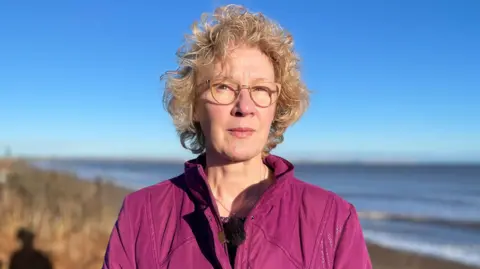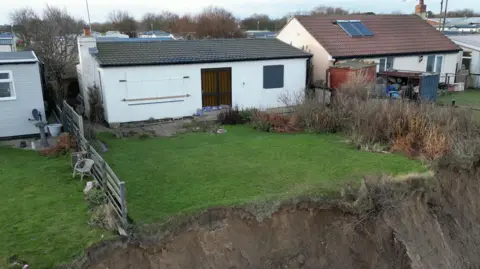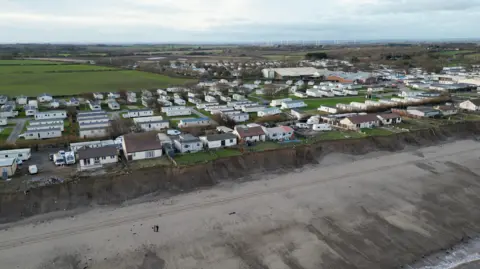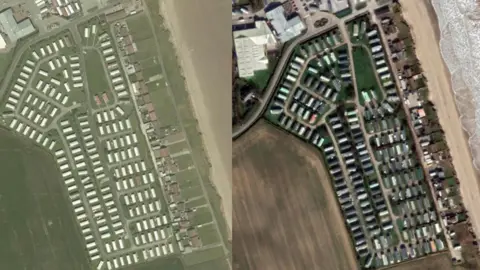 BBC
BBCOwners of clifftop holiday homes say their council tax bills will double next year despite the property being targeted for demolition.
Properties in Skipsey are classed as vacant second homes and East Riding of Yorkshire Council (ERYC) has stipulated that state owners will be subject to a surcharge unless they are lived in or let out. .
Deborah Hawksley said she could not rent out the cottage because the council had previously told her the building was dangerous and needed to be demolished.
Yorkshire East Riding Council declined to comment on the Hawksley incident, but said: “We are working with at-risk communities to find better ways to help them adapt to coastal erosion. ” he said.

The Hawksley family has owned the coastal property since the 1930s and built 'October Cottage' when a previous holiday home on the same property sat too close to the cliff edge.
Ms Hawksley said her 90-year-old mother, who owns the property, could soon face a council tax bill of around £280 a month.
She said: “We are really in a Catch-22 position. We can’t sell or rent the place, but they (East Riding Council) also insist we pay double council tax from April next year. “There is,” he said. And that seems incredibly unfair. ”
The family signed a deal with ERYC in 2021 to demolish the cottages at no cost to the owners once they are less than 9.3 meters (30 feet) from the edge of the eroded cliff.
“I don't want to measure it too often because it's so devastating, but I think it's less than 10 meters from the edge right now,” Hawksley said.

Skipsey's Green Lane is home to about a dozen properties at varying distances from the edge of the cliff, all of which are losing their gardens to the sea.
The clifftop homes were once accessed by a coastal road, but over the past 20 years they have slid into the sea, along with fences, water pipes, sewers and telephone lines.
Ms Hawksley said local residents were in a unique situation when it came to council tax because they were “underserved”.
“My mother pays £146 a month for 12 months of the year, and that's doubled. There are no street lights, there is no rubbish collection, so we receive nothing. No,” she said.
 google
googleScientists say Holderness Coast, between Skipsey and Kilnsea, is one of the fastest eroding coastlines in Europe due to its “soft” boulder clay.
A report published by the Environment Agency on Wednesday said up to 1,100 properties could be lost on the east Yorkshire coast by 2025 as climate change accelerates.
In areas where coastal defenses cannot be constructed or maintained, ERYC offers assistance from the Coastal Modification Fund to help homeowners with demolition and relocation costs.
An ERYC spokesperson said the authority was working to “inform households as soon as possible of the level of risk of coastal erosion to their property”.
“We are also working with communities to take steps to relocate their critical assets and infrastructure in the short term, while finding ways to better support them in adapting to coastal erosion in the long term. I'm looking for it.”




